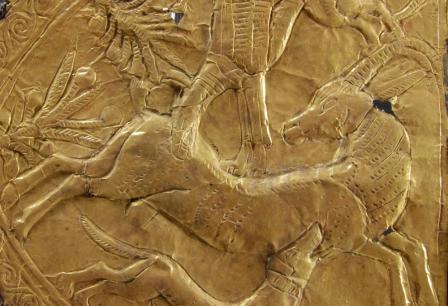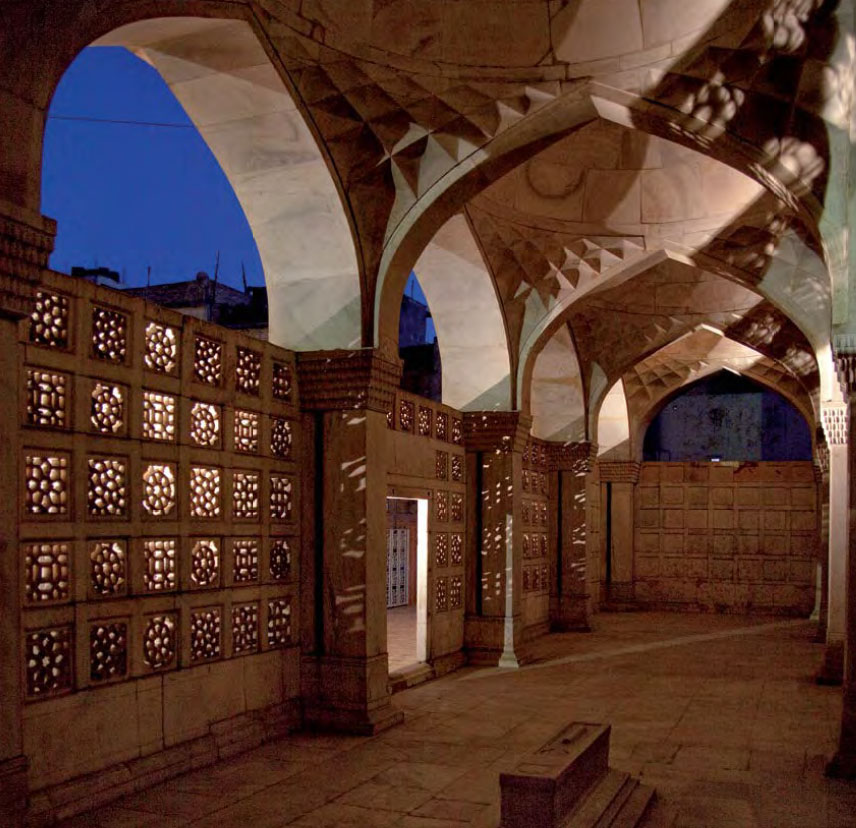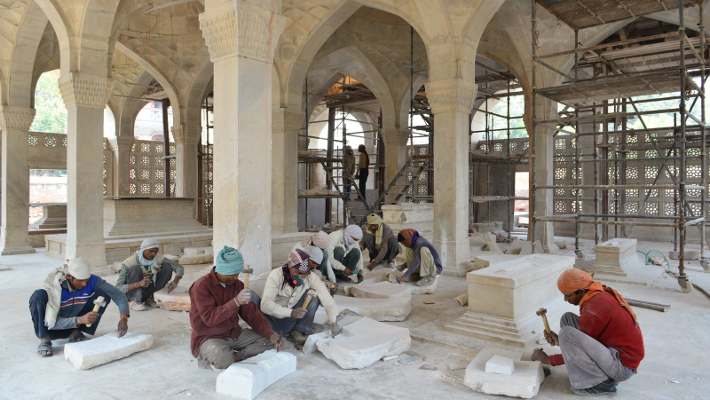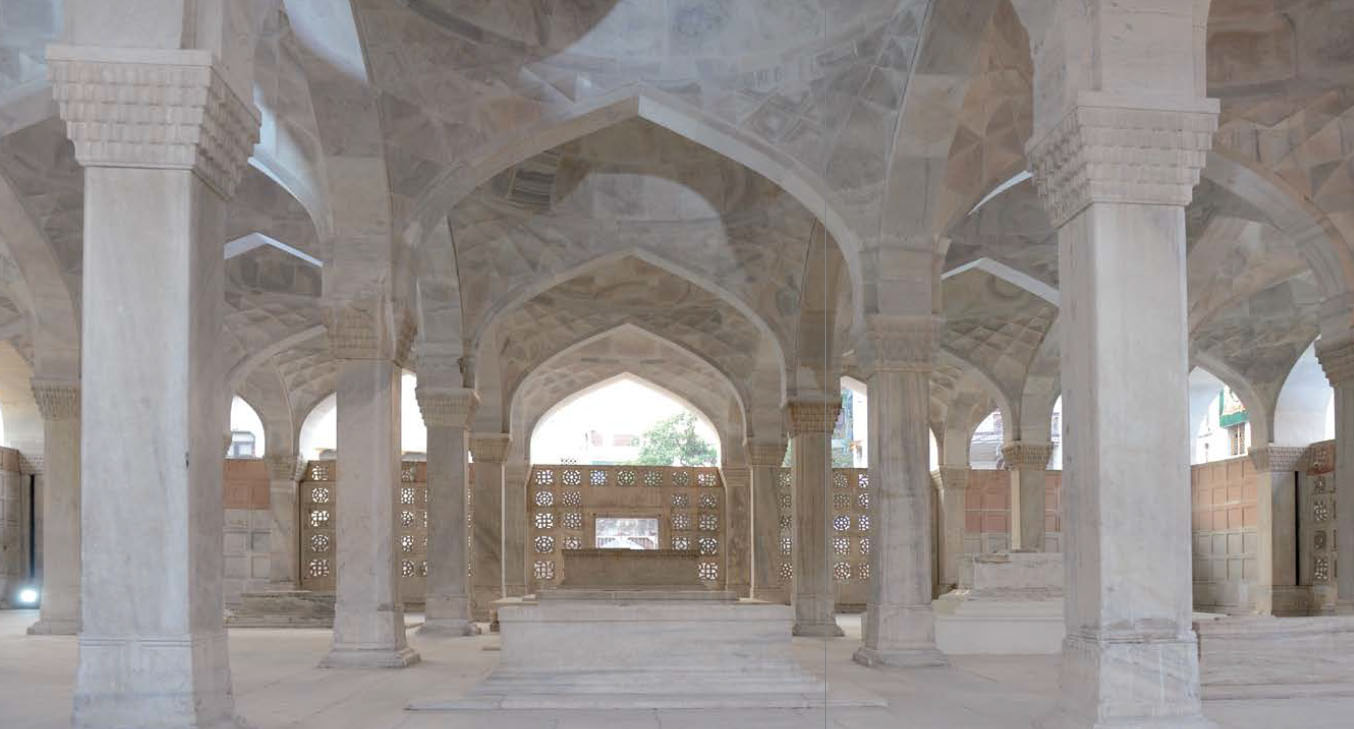The project which is carried out in collaboration with the IANES-Institute, University of Tübingen, the Römisch-Germanisches Zentralmuseum in Mainz (RGZM) and the Egyptian Museum in Cairo centers on approx. 100 gold sheet appliqués from the tomb of Tutankhamun. The main aim is a comprehensive restoration and scientific analysis of this previously little considered corpus of objects.
Nearly a century ago now, in 1922, Howard Carter discovered the tomb of Tutankhamen, dating from the 14th century before the Common Era. What ancient Egyptian object is as iconic as the young pharaoh‘s golden death mask? The mask was put on display and caused a sensation. But some other artefacts discovered at the same time have received comparatively little attention. Some of these undeservedly neglected items are now being studied in a collaborative project involving the DAI ‘s Cairo Department – specifically approx. 100 fragments of gold relief panels found near the chariots in the antechamber of the pharaoh‘s tomb. They consist of embossed gold foil attached to solid material, presumably leather and textile. Until recently they were kept in the storage magazine of the Egyptian Museum in Cairo. Now these extremely delicate artefacts are being analysed, scientifically appraised, restored and prepared for public presentation.
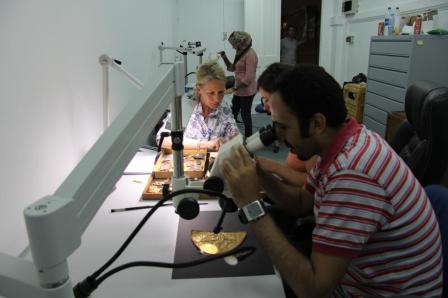
Here and there the solid material to which the thin gold foil was attached still survives. It is thought to consist of several layers of leather, textile and plaster. Non-destructive technologies are being used to determine the composition of the material and the means by which the gold was fastened to it. Many of the gold foil fragments have become separated from the material that formerly supported them, and most of them are damaged, displaying warps, folds and tears.
But material analysis is only one part of the job. “We want to try and eliminate the damage as far as possible to recapture the legibility of the figural scenes,” says Christian Eckmann, restorer at the Romano-Germanic Central Museum in Mainz. To do this, the restorers have to carefully unfold bent fragments and stabilize cracked ones by fixing them to fine synthetic fibre. “It‘s often little things that reveal a lot,” says Stephan Seidlmayer, director of the Cairo Department of the DAI. For instance, some motifs are traditional in ancient Egyptian art, such as the pharaoh on a hunt, in battle or enacting a rite. Other images occur across the eastern Mediterranean from the late Bronze Age onwards, e.g. bullfights, caprids at a tree, and various ornamental plants.
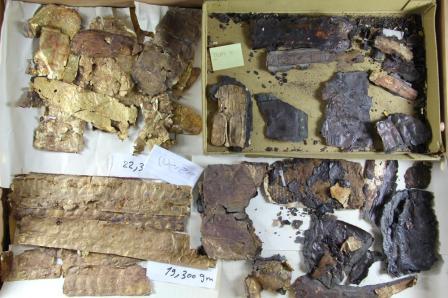
“These gold relief panels, overlooked until now, in fact provide important evidence on international contacts between powers in the East in this period,” Seidlmayer says. These contacts include not only war, tribute and dynastic marriages, but also trade in metals, glass, semi-precious stones, raw materials, luxury goods and foodstuffs, as well as the exchange of officials. And these small gold fragments may also yield new insights into Egyptian chariots of the Bronze Age.
Project: Christian Eckmann (RGZM)
Scientific Committee: Falko Daim (RGZM), Peter Pfälzner (IANES), Sabah Abd el-Razek (EMC), Stephan Seidlmayer (DAIK)
Cooperation Partners: Romano-Germanic Central Museum, Mainz (RGZM), Dept. of Prehistory; University of Tübingen, Institute for Ancient Near Eastern Studies (IANES) and Dept. of Ancient Near Eastern Archaeology; Egyptian Museum, Cairo
Promoted by: Federal Foreign Office; German Research Foundation (DFG)
Source: Archaeology Worldwide, the magazine of the German Archaeological Institute
